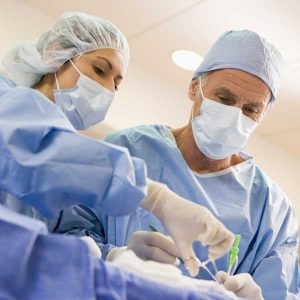
In a recent discussion with a fellow physician assistant about the PA profession, the topic of independent vs. dependent practice came up. Physicians are seen as independent providers, and PAs are seen as dependent providers. In cardiac surgery (my specialty) I cannot do open heart surgery by myself; I need my surgeon.
Upon making that statement, my fellow PA (retired from family practice) said, “Your surgeon cannot operate without you. He’s dependent upon you.”
That statement, as it relates to modern-day PA practice, was an epiphany for me. To have a successful surgical outcome, my surgeon is not only dependent upon me as his first assistant, but also dependent upon the scrub nurse, the circulating nurse, the CRNA, the lab tech, the CT ICU nurse and many other clinicians and hospital employees.
Are PAs Really the Only “Dependent Providers?”
That clinical reality draws me to ask the following questions: Why don’t other hospital employees carry the same title of “dependent provider,” and why are they not “supervised” in the same legal manner as a PA? I realize that most of them do not carry the same clinical responsibility of a PA, but they do have important roles in the care of patients.
For example: If a CT ICU RN accidently gives an open-heart surgery patient too much potassium replacement, a lethal cardiac arrest could occur. With that said, why can that same RN place orders and write notes in the patient’s medical care that do not require a co-signature by my surgeon?
A CRNA can put a patient to sleep in the operating room and place an endotracheal tube for general anesthesia. Both of those practices carry a high degree of clinical responsibility and risk. The CRNA will document those procedures in the medical record that also do not require my surgeon’s signatures — nor will those procedures be “supervised” by my surgeon.
While it is true that CRNAs are supervised by anesthesiologists, it is equally true that if an open-heart surgery patient has a negative outcome from a procedure that is performed by a CRNA, it is often the surgeon’s responsibility to relay that complication to the patient. But if that same open-heart surgery patient requires a procedure post-op, say a chest tube insertion performed by a PA, “supervision” by a surgeon is required and, in some states, the surgeon’s co-signature of that procedure note is also required.
 “Supervision” is a Dated Term
“Supervision” is a Dated Term
Despite that, if a PA has a complication from that chest tube insertion, she carries the same degree of legal responsibility as the surgeon and can get sued independent of the surgeon. As a well-seasoned PA, I cannot remember the last time a surgeon “supervised” or was physically present at the bedside of one of my procedures. When I work in the CT ICU overnight, my surgeon (who is asleep at home) is not “supervising” my work.
The term “supervision” is a dated term, as it is simply does not reflect modern-day clinical reality. Therefore, more up-to-date and clinically realistic terms like collaboration are now being used by the PA profession.
Now, as with other clinical practices, I know that my surgeon is a phone call or page away to review changes in patient conditions or to discuss treatment plans. In addition, we round on the patients on a daily basis, sometimes twice a day. We are dependent upon each other. As a team, my surgeon and I, along with the other hospital employees, work together to care for our patients. PAs that work in other clinical practices, both medical and surgical, work with similar degrees of autonomy and team-oriented approaches.
Is it Time for Independent PA Practice?
With this all said, the following question does naturally arise: Is it time for independent PA practice? I am not advocating for “true” independent practice, as that type of clinical practice is becoming less of a reality in modern-day medicine. More and more physicians are leaving independent and small group practices to join larger and economically more stable larger group practices or health systems.
In addition, the specialization of medicine and surgery requires that all providers work together more than ever to care for our older and more medically complex patient populations.
What I am advocating for is a leveling of the practice field, from a regulatory standpoint for the PA profession.
Whether it is writing a prescription, performing a well-baby exam, dictating a discharge summary or inserting a central line, a PA carries a significant legal risk for those types of everyday medical and surgical tasks.
Dated Practices are Holding the PA Profession Back
When performing any clinical task, PAs are expected to have the exact same clinical proficiency and outcome as physicians. When the PA profession was “born” in 1967, the concepts of supervision and co-signatures were required in order to gain acceptance by the medical committee to the then newborn profession. Now almost 50 years later, the PA profession is fully grown and accepted by all fields of both medicine and surgery, so much so that the Affordable Care Act identified PAs as one of the three clinicians who can provide primary care.
Yet, many dated practice barriers still exist that hold the profession back.
I believe that once a PA has demonstrated proficiency, there should be an acceptable set of standards of care that are specific to the practice and specialty and that a PA can perform without restrictions. Such changes will reflect how PAs clinical practice today, not how they started out in 1967.
I truly believe that these dated restrictions are holding the modern-day PA profession back, and until those restrictions are eliminated, PAs will not be permitted to give their patients timely, efficient and effective care.